If your cat isn’t spayed (or “fixed”), you might be concerned that she is pregnant. This is especially true if you’ve noticed her going into heat recently.
Heat is when a female cat (or queen) is ready to breed. Symptoms of heat include meowing or calling, rolling around on the ground, and becoming very affectionate. She may also try very hard to get outside. Another sign is she pushes her tail off to one side either on her own or when pet near her rear. Heat usually lasts about a week or two. Some cats stay in heat for longer periods. Heat will also end if your feline friend becomes pregnant. Cats generally mate year-round but more often when the weather is warm and the days are long.
Spaying your cat before their first heat is the best way to prevent pregnancy. This practice also prevents a life-threatening infection called pyometra. Spaying prevents unwanted kittens and may also keep your cat from getting mammary tumors (breast cancer) when she gets older.
Knowing when a cat is in heat is great, but how do you know if a cat is pregnant? Many things alert you to the fact that your cat will have kittens. Some clues in cats are similar to those in human women. If you’re unsure your cat is pregnant, look for the following signs!

Cat pregnancies are fairly similar to humans regarding signs.
©iStock.com/bozhdb
1. Vomiting
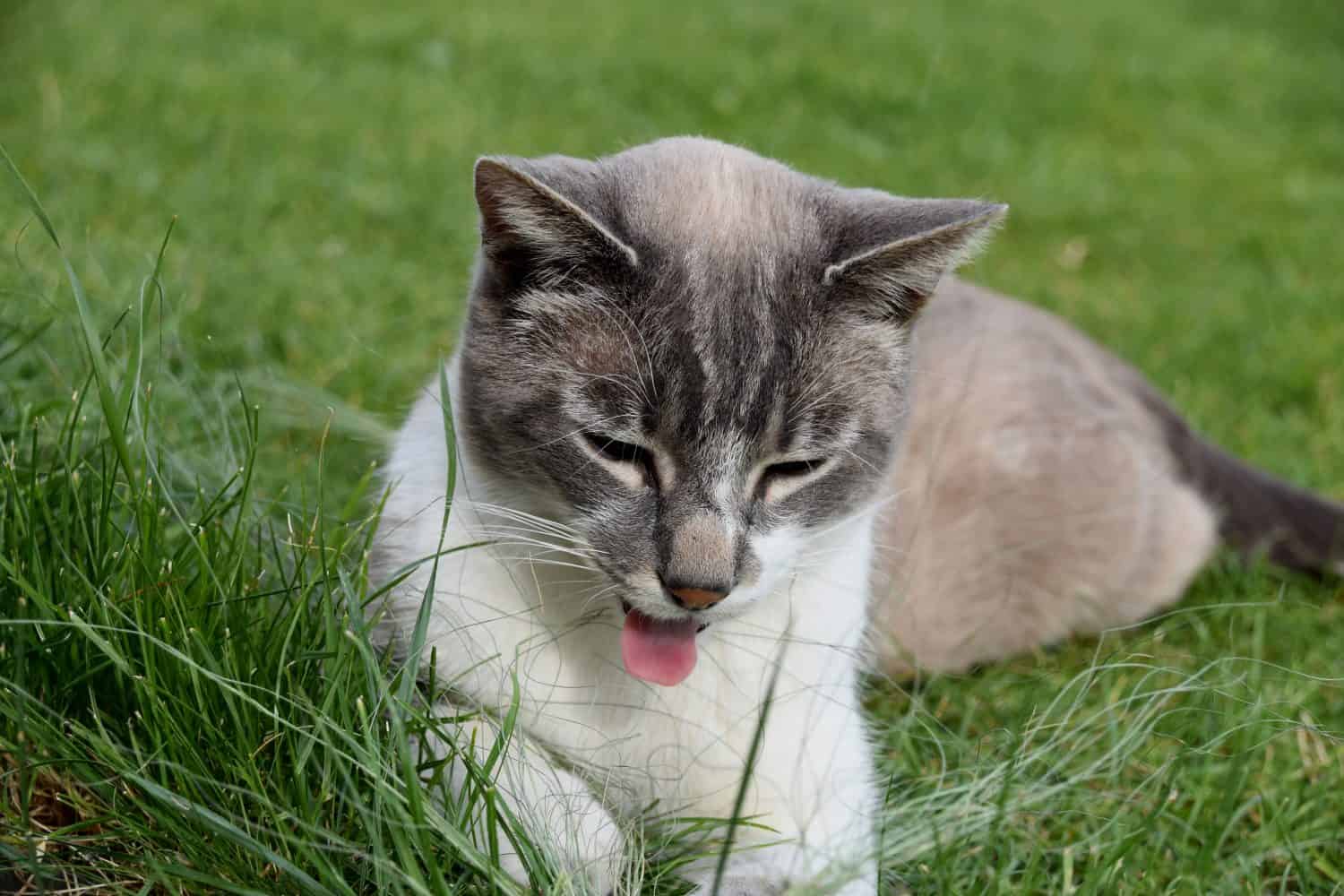
Your cat may vomit as a sign of pregnancy.
©Georges Hanna/Shutterstock.com
During the first few weeks of feline pregnancy, your kitty may feel nauseous, similar to human women who suffer from morning sickness. Typically, this won’t last more than the first 2–3 weeks of the pregnancy. Other signs your cat is nauseous include drooling and refusal to eat. Cats can also dry-heave (or motion as if to vomit without producing anything).
That being said, vomiting is a common marker of illness in cats. So, taking her to the veterinarian is essential if your cat is vomiting more than once every few weeks or the occasional hairball. This is especially true if they don’t want to eat. Cats risk fatty liver syndrome (hepatic lipidosis) if they don’t eat for as little as 48 hours. This condition can be deadly if not treated quickly and intensely.
2. Increased Appetite

Pregnant cats need a lot of calories, so you may notice your cat eating much more than usual.
©AlexanderDubrovsky/Shutterstock.com
Just like human women, pregnant cats need to consume additional calories to support their growing babies. Because of this, your cat might eat more than normal. She may even resort to stealing your food or breaking into the trash. If you notice your cat is more hungry than usual, consider taking it to the vet, as this can also be a symptom of hyperthyroidism.
3. Weight Gain
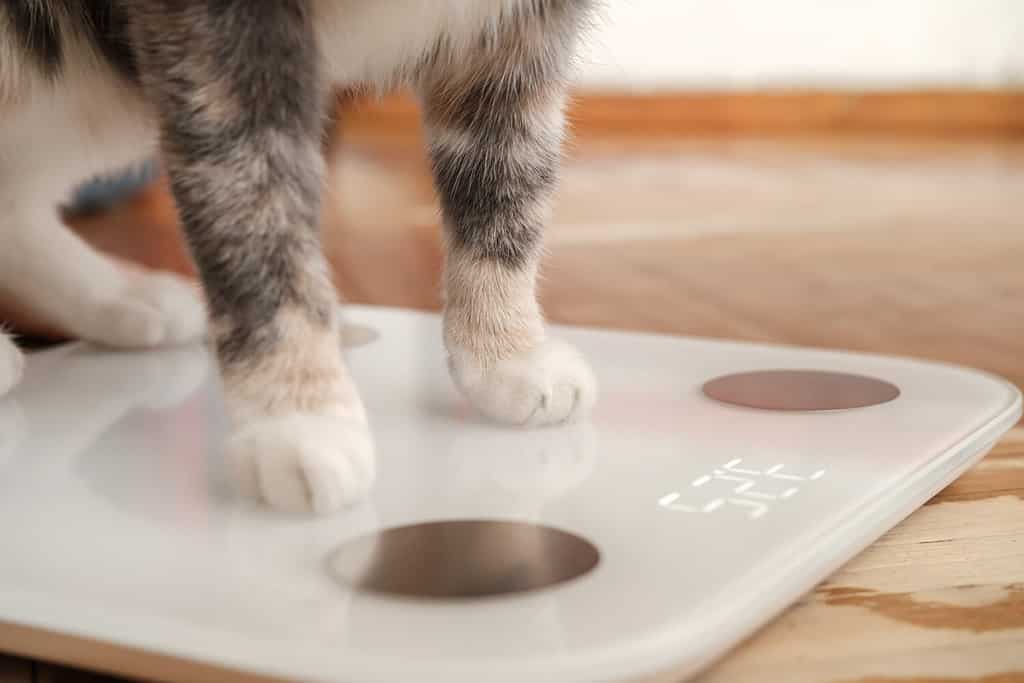
Rapid weight gain in your cat may be a sign of pregnancy, however, it can also be an indication of diabetes, so have a vet check out your pet.
©Koldunov Alexey/Shutterstock.com
When cats become pregnant, they start to gain weight. That’s because the babies gain weight as they grow. If your cat seems to be gaining weight pretty quickly, she could be pregnant. However, excessive weight gain can also be a sign of diabetes.
4. Pinking Up – One of the Earliest Signs a Cat Is Pregnant
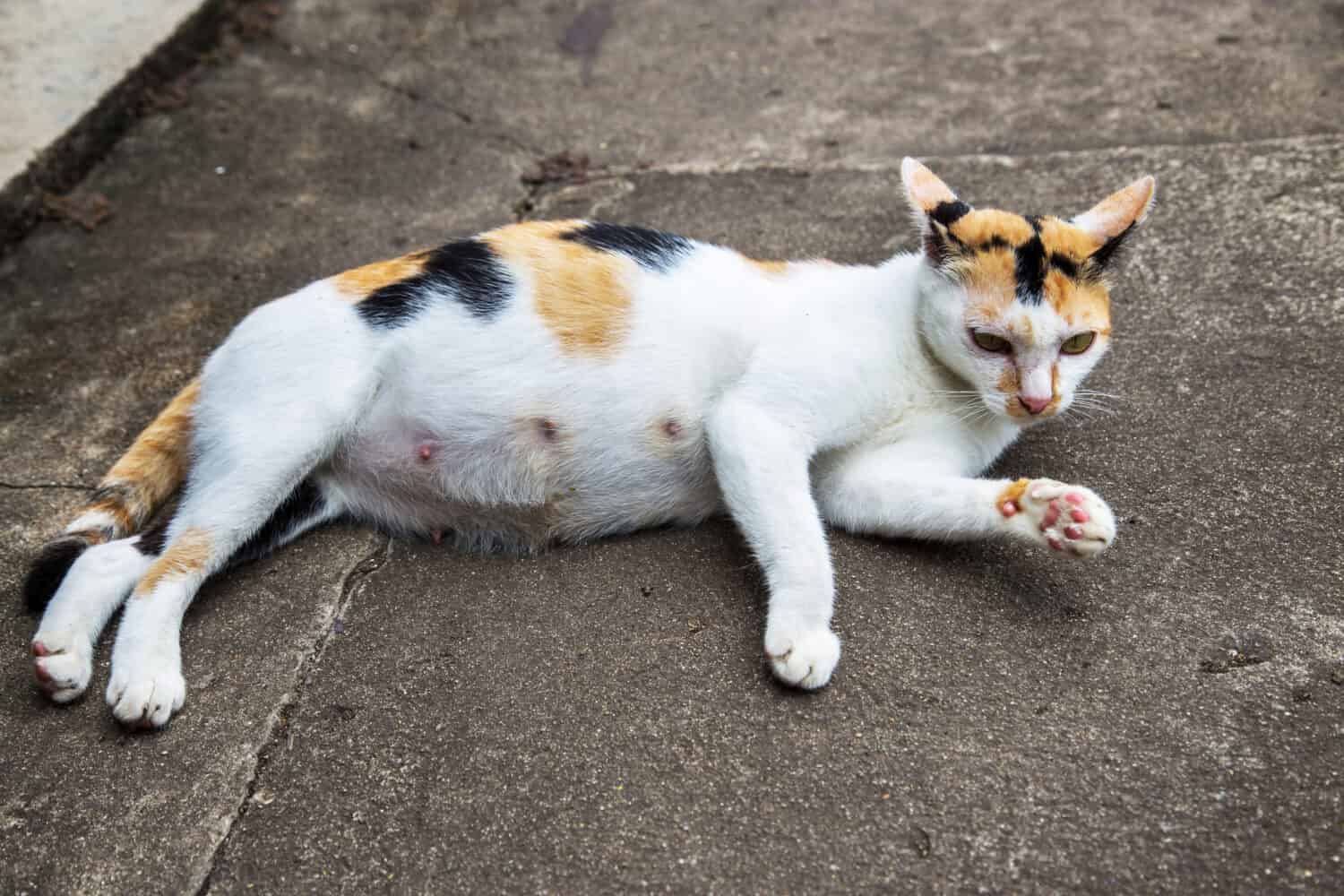
At about 3 weeks into pregnancy, the cat’s nipples turn bright pink.
©Russamee/Shutterstock.com
Cat pregnancies last for about 63–67 days (or about 9 weeks). The term for that time is the gestation period. Dogs are pregnant for about the same amount of time. That’s pretty short compared to human gestation at 9 months and elephant gestation at nearly two years!
In cats, changes in the color and size of the nipples are often the first signs that let the cat out of the bag! This happens right at about 21 days into the pregnancy. During this phase, the nipples turn bright pink. They may also begin to swell as her body prepares for nursing her babies. Thankfully, this signal that a cat is pregnant is rarely related to any other health condition. Breeders and veterinarians refer to this phenomenon as “pinking up.”
5. Sleeping More

Lethargy is a sign of pregnancy in cats but is also a warning of other serious medical conditions.
©AC Manley/Shutterstock.com
Similar to human women, growing babies makes momma extra sleepy. Now, most of us know that cats sleep up to 20 hours today. Nonetheless, if your kitty seems to be more tired than usual, this could be a sign she’s pregnant. Lethargy (or inability or unwillingness to get up and move about) can be a warning of more serious problems. If your cat is lethargic, take it to the veterinarian!
6. Personality Changes

Dramatic personality shifts, especially if a docile cat is suddenly aggressive, is a common sign of pregnancy in cats.
©Anna Krivitskaya/Shutterstock.com
Perhaps a sudden personality change is one of the more interesting cues your cat is pregnant. This is usually becoming abruptly more affectionate or clingy. Your cat might make a point of coming and snuggling with you when she normally likes to do her own thing. She also might rub her face and head on you, objects, or other pets more than usual. She may encourage you to rub her belly and roll over to show it off. These changes are attributed to the increase in motherly hormones. Some people say cats can smell these hormonal changes in human women and may become more affectionate or protective of them!
Sometimes, personality changes in pregnant cats are the opposite. Kitty may become aggressive toward you and want you to keep away. She may be very protective of her belly and lash out with claws and teeth if you touch it or near it. Momma kitty might also suddenly become very protective of her food and attack housemates if they come too close while she is eating. This type of personality change is also a natural reaction to her pregnancy. After all, it is her instinct to protect her babies at all costs.
7. Hiding

If your cat is pregnant, she may hide under furniture, in a closet, or in other strange places.
©Africa Studio/Shutterstock.com
Around 7–9 weeks of pregnancy, your cat may begin to hide more. You may find her in strange places that are dark and quiet. She needs a lot of rest at this stage and will likely seek out safe places to do that. This may also occur with aggressive personality changes we discussed earlier. Unless your cat is hiding somewhere dangerous, it’s best to let her do her thing. This will help her feel more comfortable and at ease with her pregnancy. Unfortunately, if pregnant cats become too stressed, they can lose their litter through spontaneous abortion (miscarriage).
8. Swollen Belly: The Most Obvious Sign a Cat Is Pregnant
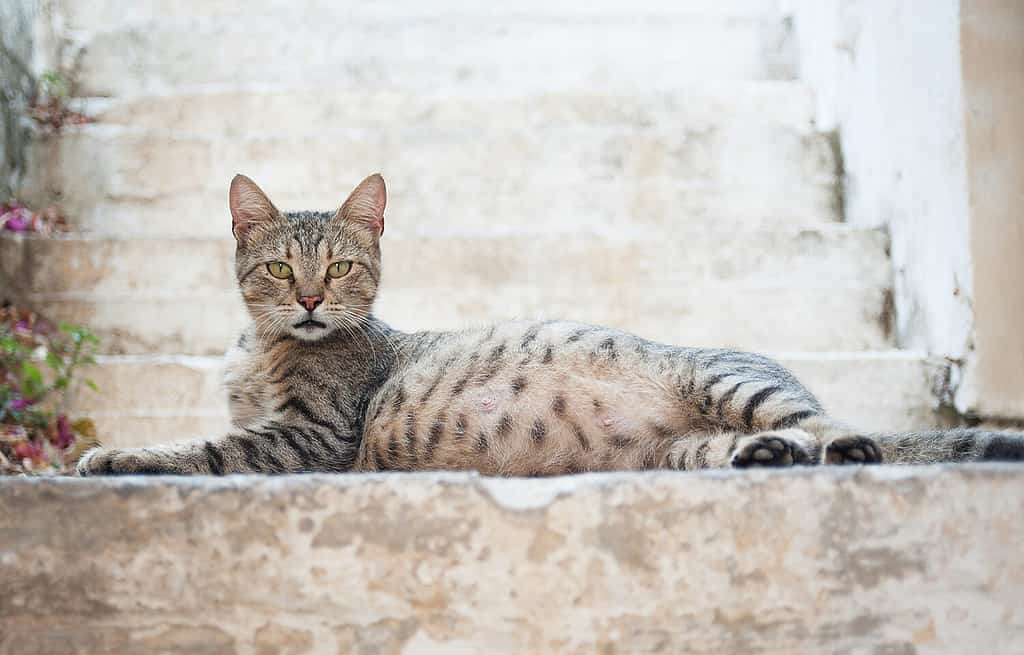
Pregnant cats develop a swollen belly around 5–6 weeks or sooner if the litter is very large.
©Jim Polakis/Shutterstock.com
Depending on the size of the litter, pregnant cats begin to “show” or have a swollen belly around 5–6 weeks along. If the litter is especially large (more than four babies or so), she may begin to show sooner. Once the belly starts to grow and takes that rounded shape, you’ll know for sure your cat is pregnant!
Sometimes, a swollen pregnant belly prevents a cat from cleaning herself properly. Keep a close eye on your kitty and ensure she is kept nice and clean. If you must, using baby wipes to help her keep her back end tidy helps a lot.
9. Nesting: The Instinctual Sign a Cat Is Pregnant

A nesting cat will look for a safe place to have her babies.
©Cat Hammond/Shutterstock.com
Nesting is when a cat is pregnant and begins to find the place she wants to have her babies. This may be combined with hiding behavior. Naturally, pregnant cats want to find a safe, sheltered, and quiet place to give birth. Her instincts direct her in this. Not only does she need to feel safe, but she requires that her babies are safe should she need to leave them for any reason.
Also, your cat must find a safe nesting space that is not her litter box. That’s because newborn kittens can become caked with litter. This can accidentally be swallowed by the mom while cleaning them or by the kittens themselves. It can also stick to the nose and make it hard for the babies to breathe.
It’s always best to switch to non-clumping litter (such as washable litter pellets) when your cat is ready to give birth and until the kittens are old enough to know not to eat it. Clumping litter can cause intestinal blockages and lead to death.
10. Restlessness
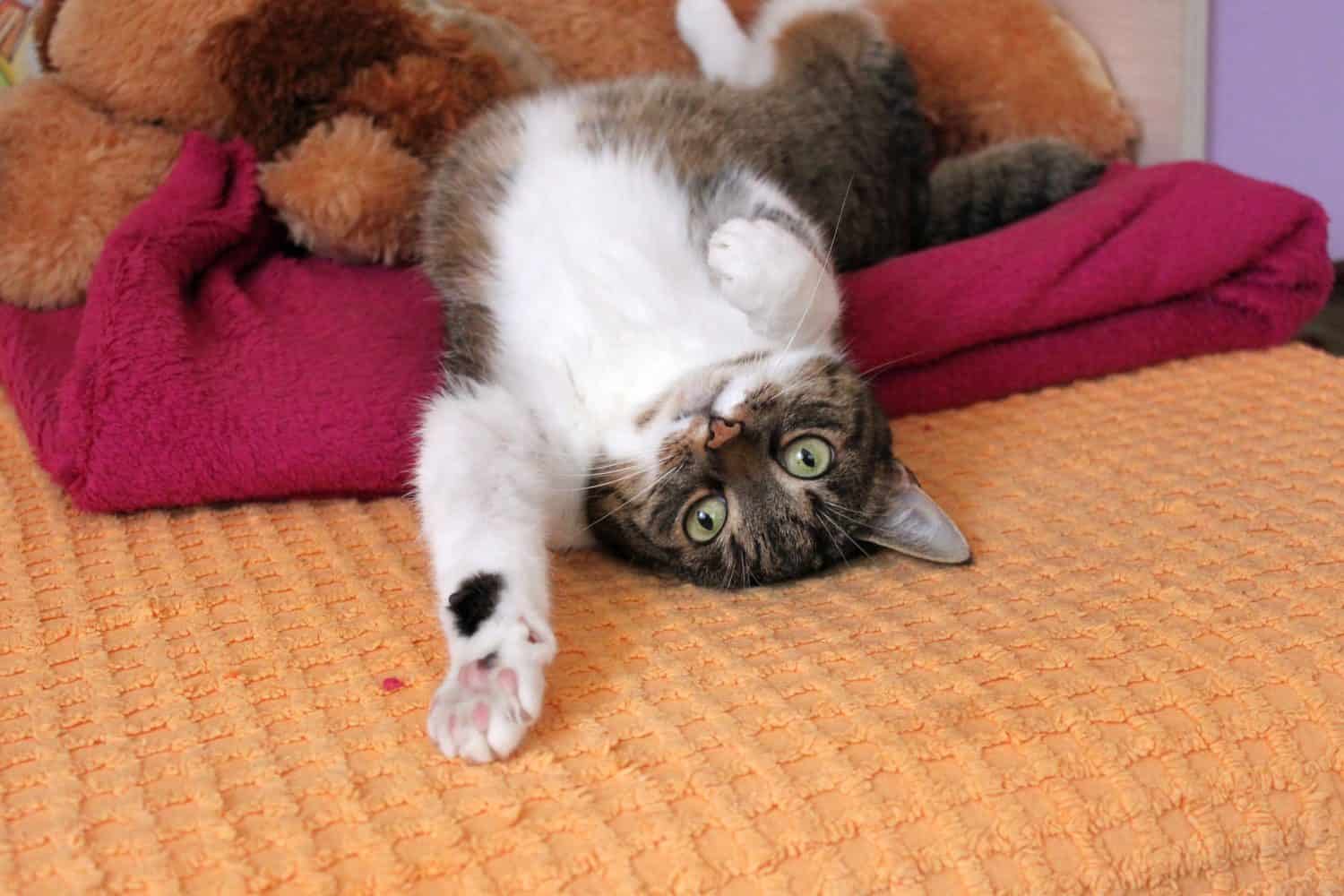
Your cat may seem to be get uncomfortable and move around repeatedly due to discomfort during the pregnancy.
©Fantastyczna Pasja/Shutterstock.com
Toward the end of her pregnancy, your cat may become restless. Restless means moving around or walking around a lot. She may seem uncomfortable. Pregnant cats often pace when their contractions (when muscles for birthing tighten and loosen) start to help relieve their pain. She may also cry out in pain, which could be a sound you’ve never heard her make before.
If your cat has already been nesting, you may see her moving blankets or bedding around. She might also dig. She may drag extra comfort items into the nest site such as towels, blankets, or plush toys.
Sometimes, mother cats become restless after the babies are born. This is usually because they do not feel safe. As we’ll discuss in a bit, you can help by ensuring your pregnant cat has a safe nesting site.
How to Tell Your Cat Is Pregnant Chart
The following chart is a very basic guideline. It includes signs your cat is pregnant and which stage she may be at in her pregnancy.
| Sign Your Cat is Pregnant | Likely Stage |
|---|---|
| Vomiting | 1–3 weeks |
| Increased Appetite | 3–9 weeks |
| Weight Gain | 3–9 weeks |
| Pinking Up | 3 weeks |
| Sleeping More | entire pregnancy |
| Personality Changes | entire pregnancy |
| Hiding | 7–9 weeks |
| Swollen Belly | 3–9 weeks |
| Nesting | 7–9 weeks |
| Restlessness | 8-9 weeks |
What to Do if Your Cat Is Pregnant?
If you think your cat is pregnant, take her to the veterinarian. This will help confirm the pregnancy and ensure momma and kittens are healthy. A majority of the time, cats go through pregnancy and give birth without any problems. However, monitoring by you and your vet can help make sure that happens. Let’s learn a little more about what you can do if your cat is pregnant to help her have a successful litter!
Get an Ultrasound
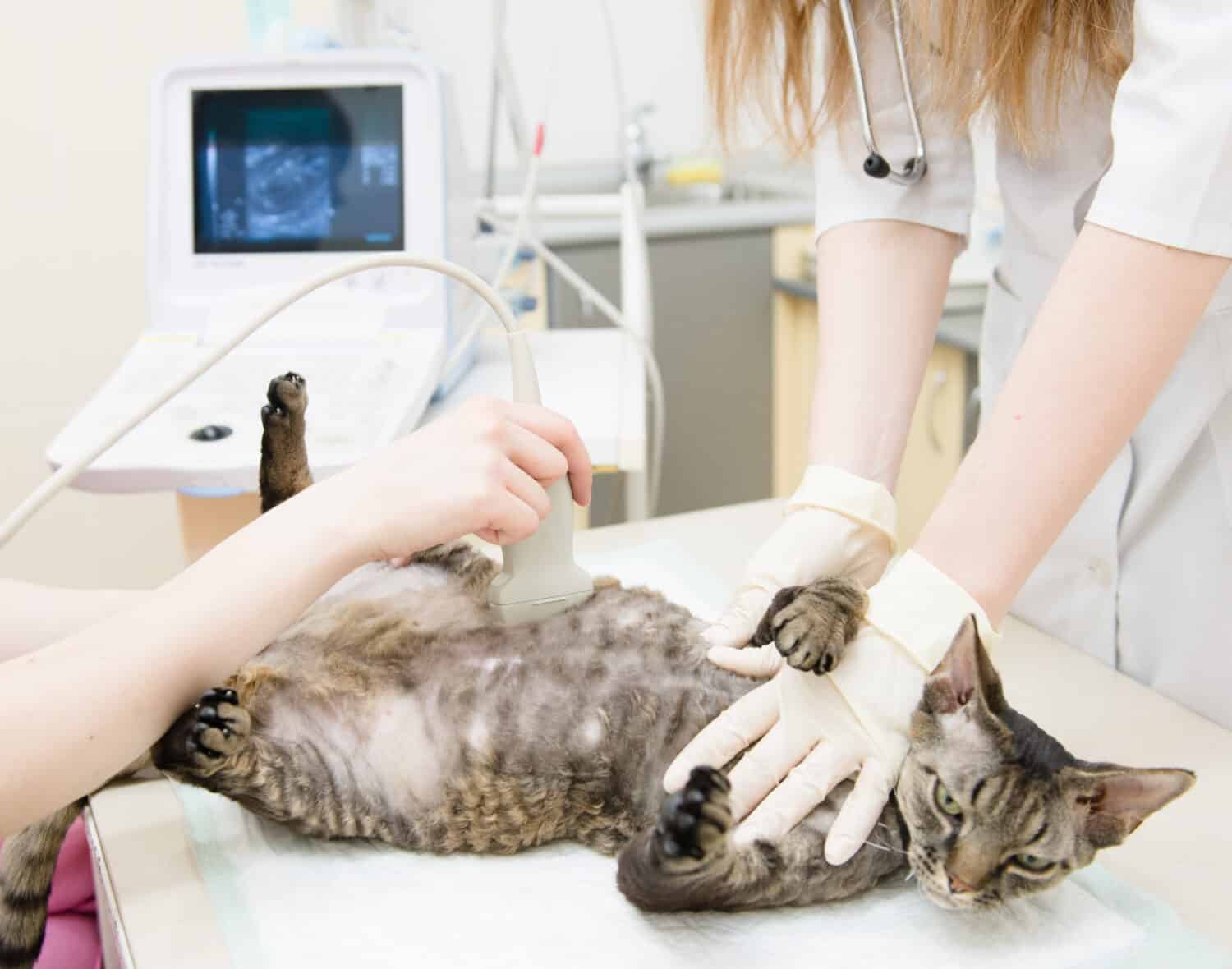
If your cat is pregnant and her belly has started to swell, your veterinarian can perform an ultrasound to look for the kittens’ heartbeats.
©Ermolaev Alexander/Shutterstock.com
Your vet can perform an ultrasound any time after about 3 weeks of pregnancy. This allows them to visualize the kittens’ heartbeats. Ultrasound is the most effective method of early detection for feline pregnancy. An ultrasound works by sending sound waves through the belly, which bounce off solid objects and return images based on that.
Get an X-ray
After about 45 days, the veterinarian can take an X-ray to help you determine how many kittens your cat will have. Taking x-rays before 45 days is not recommended because it is unlikely to pick up the kittens’ underdeveloped bones, so it would be a waste of money. It’s also stressful for your cat for no reason.
We asked Dr. Shelly Wyatt, a Doctor of Veterinary Medicine at Northwood Hills Animal Hospital, if x-raying before 45 days is dangerous for the mother or kittens. She said, “It’s pointless because you won’t be able to count kittens before then, but human radiologists do not have concerns about a few radiographs on pregnant women at any stage. A CT scan would be a very different story as it entails much more radiation. There are no studies that have found conclusive links between in-utero radiographs and any increased risks of deformities, cancers, autoimmune conditions, etc. on offspring in humans, dogs, cats, rodents, or primates.” So, don’t worry about hurting the kittens with an x-ray!
Feed Her Kitten Food
One of the most important things you can do if your cat is pregnant is to ensure she has 24-hour access to high-quality kitten food. Along with plenty of fresh water, the kitten food provides all the calcium, fat, and other nutrients your momma kitty needs. Feeding kitten food will help her stay strong and ensure the kittens get the right nutrition to be happy and healthy when they are born!
Mother cats should eat kitten food from the time you find out they are pregnant to when the kittens are fully weaned. Be aware your momma kitty may stop eating entirely up to 48 hours before giving birth.

Offering your pregnant cat both dry and wet food kitten food is a great way to ensure she gets enough calories during pregnancy and while nursing.
©Galina-Photo/Shutterstock.com
Create a Safe Nesting Place and a Birthing Kit
Another essential action you should take is creating a safe place for your cat to give birth. This needs to be a quiet place with food, water, and a litter box. Many people use a bathroom or laundry room.
Of course, you’ll also need a nesting site. It’s best not to use towels for the nest box because newborn kittens cannot retract their nails yet. Towels have teeny hooks on them that can catch baby kittens’ nails and damage them. The best thing to use is a soft fleece blanket. Be careful not to add too much to the nest, and fold blankets so they lay flat. That’s because kittens can easily become trapped in blankets and suffocate or get laid on by the mom.
You may also want to create a birthing kit to ensure you’re ready to help if necessary. Items to include might be extra blankets, gloves, twine or fishing line (to tie off umbilical cords), kitten milk replacer, bottles, and puppy pads.
How to Help When Your Pregnant Cat Is Ready to Give Birth
Most of the time, pregnant cats give birth on their own without any need for human intervention. In fact, your cat may become distressed if you stare at her the whole time. It’s okay to check on her occasionally, but try not to interfere. Also, contrary to popular belief, it’s okay if the kittens come out backward (breech). This is relatively normal and directly related to how the kittens are positioned.
The only times you should get involved with a pregnant cat’s birthing process include the following.
- Mom isn’t able or willing to clean the kittens after birth: You can gently remove the sack, ensuring to clear it from the face so the kitten can breathe. Then, you can carefully dry the kitten by rubbing it backward against the fur with a soft cloth. This will simulate what the mother does with her tongue. Lifting the hair like this allows it to dry more quickly. Once dry, place the kitten near mom’s belly so they can begin nursing.
- Mom doesn’t bite through the umbilical cord: You can gently tie the cord off with twine, sewing thread, or fishing line about 1/4 inch from the kitten’s body. Tear the remaining chord and placenta off with your fingernail or carefully cut with clean scissors.
- Mom isn’t staying with the kittens: You can provide warmth in the form of a covered hot water bottle or heating pad. Make sure no part of the kittens can directly touch the heat source to prevent burns.
- Mom is laying on a kitten: Sometimes, the mother doesn’t realize she’s laying on a kitten. You can gently move the kitten from under mom and place it near her belly. Be careful, though; some mother cats may act aggressively if you attempt to touch their babies.
When Should You Call the Vet?
Honestly, you should call your veterinarian any time you are concerned during your cat’s pregnancy or birthing. It’s always better to be safe and feel a little silly than to avoid calling and there be a serious problem. Call your veterinarian right away if you notice these signs:
- Your kitty has been consistently pushing and there is no progression for 30 minutes.
- The kitten is partially out and mom seems too tired to push anymore.
- Your cat suddenly seems very weak or is unable to lift her head.
- Your cat is bleeding heavily after she is no longer birthing kittens.
- If you see green discharge without a kitten.
- No kittens appear within one hour of the last and you’re positive there are more.

Mother cats snuggle their babies to keep them warm and allow them to nurse. If she isn’t doing this, you may need to help keep the kittens warm.
©A-Z-Animals.com/Rachael Monson / Nemera Bengals
Final Thoughts on How to Tell a Cat Is Pregnant
We’ve covered the many signs that can confirm your cat is pregnant. We also discussed that you should seek veterinary care as soon as you think your feline friend has babies in tow. Lastly, we talked about how to help your kitty prepare for and safely give birth. As always, consulting your veterinarian is the best option for making sure your cat is happy and healthy, pregnant or not!
The photo featured at the top of this post is © Oleksandr Lytvynenko/Shutterstock.com
Thank you for reading! Have some feedback for us? Contact the AZ Animals editorial team.







